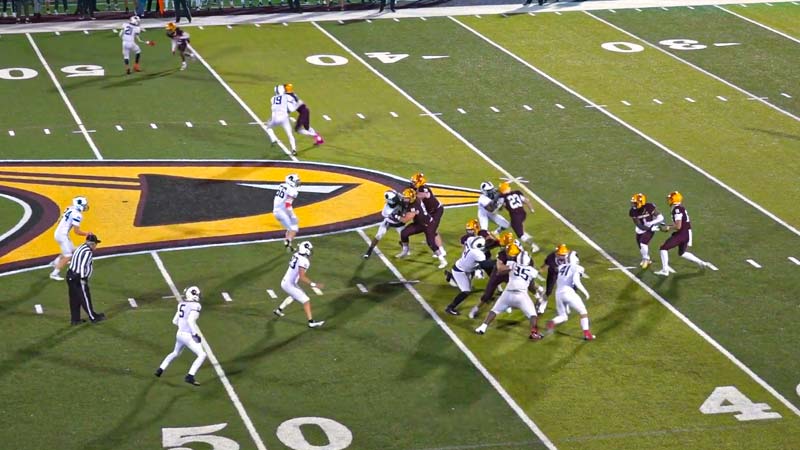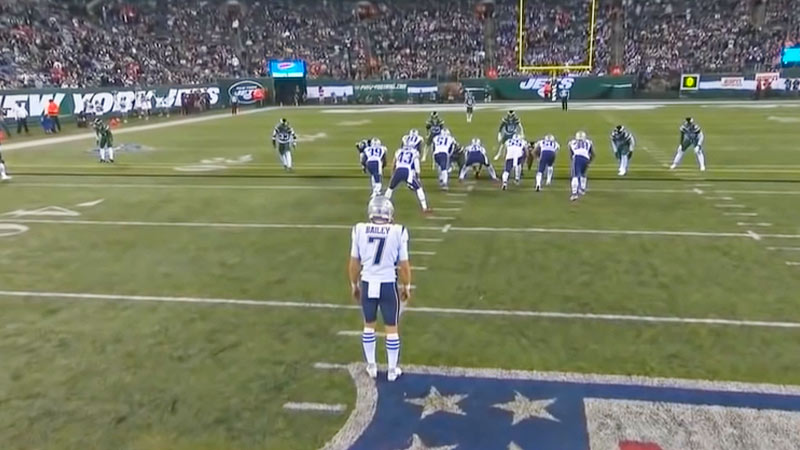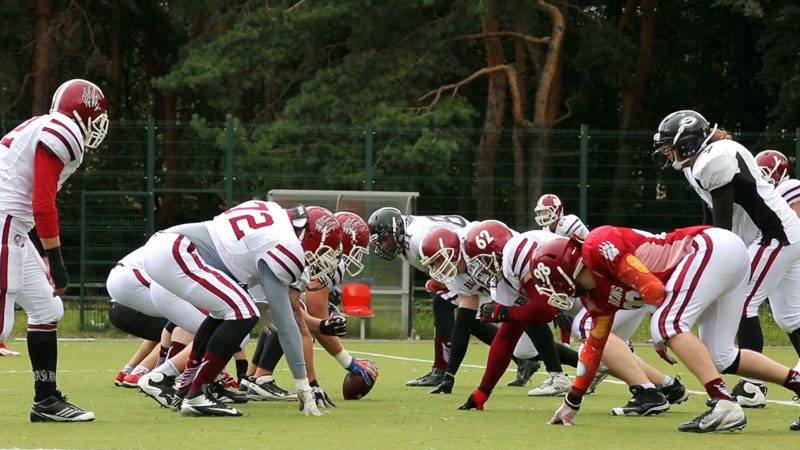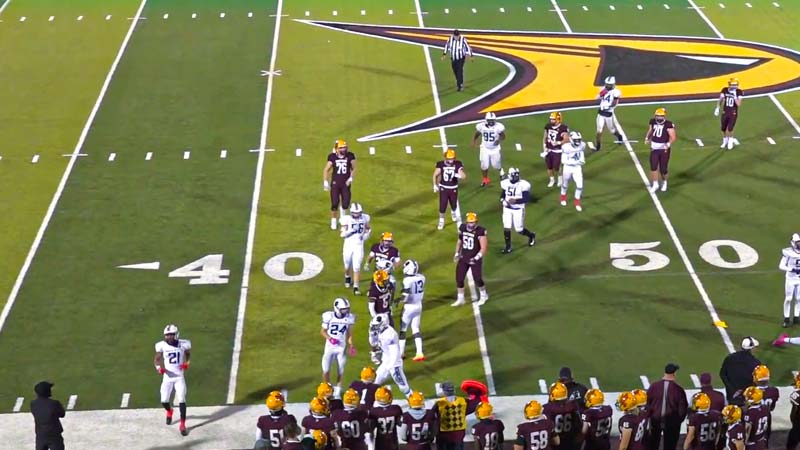In the high-stakes arena of NFL football, every second matters. The art of clock management can be the difference between a thrilling last-minute victory and a heartbreaking defeat.
At the heart of this intricate dance lies the NFL clock stop rules, a set of regulations that govern when the game clock halts and restarts during various in-game scenarios.
In this guide, we delve into the intricacies of these rules, uncovering how they shape game strategies, impact play-calling decisions, and contribute to the excitement that makes American football a spectacle like no other. So, stay focused.
What Is Clock Stop in Football?
Clock stop in American football refers to the halting of the game clock, which measures the time remaining in a given quarter or half of the game. The clock is typically stopped for various reasons, such as when a player goes out of bounds, an incomplete pass is thrown, a timeout is called, or a penalty occurs.
These stoppages allow teams to strategize, regroup, and manage their time more effectively. The clock resumes once the ball is set for the next play or after a certain action, like the snap of the ball.
Skillful clock management is crucial, particularly during critical moments, as teams strive to conserve time or extend their possession to optimize their chances of scoring or controlling the game’s tempo.
Clock Stop Rules in NFL
Clock stop rules in the NFL govern when the game clock halts and restarts during play. The clock stops when a player goes out of bounds, a pass is incomplete, possession changes, timeouts are called, during the two-minute warning, for player injuries, and specific penalties.
These rules enable strategic time management, impact play calling, and contribute to the intensity of late-game scenarios. Teams utilize these stoppages to control the game’s pace, optimize scoring opportunities, and manage critical moments effectively.
Here’s the information presented in a table format for easy reference:
| Clock Stop Rules | Description | Clock Stop | Clock Restart |
| Out of Bounds | When a player goes out of bounds with the ball. | Stops | Next snap |
| Incomplete Pass | An incomplete forward pass, not caught by the receiver. | Stops | Next snap |
| Change of Possession | Ball possession shifts between teams (interception, fumble). | Stops | Next snap |
| Timeouts | Teams call timeouts to regroup and strategize. | Stops | Post-timeout |
| Two-Minute Warning | Occurs in the last 2 minutes of each half. | Stops | – |
| Injury | Play stops for player injury and medical attention. | Stops | Resumption |
| Penalties | Impact clock based on penalty type and consequences. | Stops | Resumption |
It’s important to note that the clock management strategy can significantly impact a team’s chances of success, especially during crucial moments of the game. Teams often use these clock stoppages strategically to control the pace of the game, conserve time, and optimize their scoring opportunities.
How Do the Clock Stop Rules Work?

The clock stop rules in the NFL are designed to ensure fair and strategic gameplay while also allowing teams to manage the game clock effectively. Here’s how these rules work in different scenarios:
Out of Bounds
When a player carrying the ball crosses the sideline or end zone boundary, the game clock stops. It remains stopped until the next play begins with a snap. This rule allows teams to save time when the ball carrier goes out of bounds, giving them a chance to plan their next play.
Incomplete Pass
If a forward pass is thrown and not caught by the intended receiver, the game clock stops. Similar to going out of bounds, the clock remains stopped until the next snap. This rule prevents the clock from running while the ball is not in play, providing teams an opportunity to regroup.
Change of Possession
When possession of the ball changes from one team to another, such as through an interception or a fumble recovery, the game clock stops. It starts again once the new possessing team snaps the ball. This rule ensures that the clock doesn’t unfairly run down while the teams switch control of the ball.
Timeouts
Teams are allowed a certain number of timeouts per half. When a timeout is called, the game clock stops. It resumes when the ball is snapped following the timeout. Timeouts are crucial for allowing teams to strategize, adjust their plays, and manage the clock during critical moments.
Two-Minute Warning
In both halves of the game, there’s a two-minute warning before the end of the half. If the game clock is running when the two-minute warning occurs, it stops. This gives teams a chance to assess their strategies and make necessary adjustments before the half concludes.
Injury
If a player sustains an injury that requires medical attention, the game clock stops. It resumes once the injured player is removed from the field and the officials signal to restart the clock. This rule ensures players’ safety and prevents the clock from running during injury-related stoppages.
Penalties
Depending on the type of penalty, the clock may or may not stop. If a penalty results in a first down, the clock stops temporarily until the ball is set for the next play.
If a penalty does not result in a first down, the clock generally continues to run. This rule prevents teams from gaining an unfair advantage by stopping the clock through penalties.
These clock stop rules allow for dynamic gameplay, strategic decision-making, and the potential for exciting comebacks during critical moments of the game. Effective clock management often becomes a key factor in a team’s success, especially in the latter stages of each half.
When Do the Clock Stop Rules Implement?

The clock stop rules in the NFL apply in various situations to ensure fair and strategic gameplay. Here’s a breakdown of when these rules come into play:
After Kicking Play
The game clock starts when the ball is legally kicked off and is touched or possessed by a player. The clock then stops when the receiving team gains possession and the ball is downed by contact with the ground, a player on either team or goes out of bounds.
For a Dead Ball
The game clock stops when the ball becomes dead. This can happen due to various factors such as a player going out of bounds, a player being ruled down by contact, an incomplete pass, or when the ball is intentionally grounded by the quarterback to stop the clock. The clock restarts when the next snap occurs.
When the Ball is Out of Bounds
If the ball goes out of bounds during a play, the game clock stops. It resumes when the next snap occurs.
For Penalties
The impact of penalties on the game clock varies depending on the situation. Generally, the clock continues to run after a penalty is enforced unless the penalty results in a change of possession or a first down. In these cases, the clock stops temporarily to allow the ball to be spotted and the teams to get set before the next snap.
For Incomplete Passes
When a forward pass is incomplete, meaning it’s not caught by an eligible receiver, the game clock stops. It starts again when the next snap occurs.
After a Two-Minute Warning
In each half of the game, there’s a two-minute warning. If the game clock is running when the two-minute warning occurs, it stops. This allows teams to strategize before the end of the half.
Timeouts
Each team is allowed a certain number of timeouts per half. When a timeout is called, the game clock stops and resumes when the ball is snapped after the timeout.
Change of Possession
When possession of the ball changes from one team to another (interception, fumble recovery, turnover on downs), the game clock stops. It starts again when the new possessing team snaps the ball.
Player Injuries
If a player is injured and requires attention from medical personnel, the game clock stops. It starts again once the player is removed from the field and the officials signal to restart the clock.
These rules collectively ensure that the game clock accurately reflects the time remaining in a half and provides opportunities for teams to strategize, manage the clock, and execute their plays effectively.
Impact of Clock Stop Rules in NFL

The clock stop rules in the NFL have a significant impact on the flow, strategy, and outcomes of games. These rules influence how teams manage time, make tactical decisions, and attempt to control the pace of the game. Here’s how clock stop rules impact the NFL:
Strategic Time Management
Clock stoppages provide teams with opportunities to strategically manage the time remaining in a half. Teams can conserve time by going out of bounds, using timeouts, or completing passes efficiently.
Conversely, teams can use the clock to their advantage by running plays that keep the clock running, especially when they have a lead.
Two-Minute Drill
The final two minutes of each half often involve intense strategies known as the “two-minute drill.” Teams try to move down the field quickly while preserving enough time to score before the half ends.
The clock stop rules during this period heavily influence the decision-making process, as teams need to balance their urgency with time preservation.
Timeout Utilization
Coaches strategically use timeouts to halt the game clock, allowing their teams to regroup, plan plays, or manage the clock strategically. Poor timeout management can lead to missed opportunities or limited time for critical plays.
Comeback Potential
The clock stop rules can impact a team’s ability to mount a comeback. Stoppages in the clock provide opportunities for teams trailing in the score to orchestrate plays, conserve time, and potentially score quickly to catch up.
Clock Exploitation
Teams in the lead can utilize the clock stop rules to their advantage by running plays that consume more time. Running plays keep the clock running, which can limit the time the opposing team has to catch up.
Late-Game Situations
The clock stop rules become especially crucial in late-game situations where every second counts. Decisions to spike the ball, take timeouts, or manage the clock carefully can make the difference between winning and losing.
Hurry-Up Offense
Clock stoppages enable teams to execute the “hurry-up offense,” where they quickly line up for the next play without huddling. This strategy aims to catch the defense off-guard and maximize the number of plays run within a short timeframe.
Field Position Management
Teams may deliberately choose to allow the clock to run if they’re deep in their own territory, aiming to end the half or the game without giving the opponent additional time to score.
Preventing Delays
Clock stoppages due to penalties, player injuries, or out-of-bounds play help prevent game delays and ensure a fair and smooth progression of the match.
The clock stop rules creates a dynamic environment where teams must balance the urgency to score or defend against the need to manage the clock effectively.
FAQs
What are NFL clock stop rules, and why are they crucial?
NFL clock stop rules dictate when the game clock halts and resumes based on specific situations. These rules are essential as they allow teams to manage time strategically, impacting plays, tactics, and ultimately the outcome of the game.
When does the clock stop for an incomplete pass?
If a forward pass is incomplete, meaning it’s not caught by the intended receiver, the game clock stops. It restarts when the ball is snapped for the next play.
How do timeouts affect the game clock?
Teams are granted a limited number of timeouts per half. When a timeout is called, the game clock halts. It resumes when the ball is snapped after the timeout, giving teams a chance to regroup, plan plays, or manage the clock.
How does the clock stop during the two-minute warning?
In each half of the game, there’s a two-minute warning. If the game clock is running when this occurs, it stops. This provides both teams with a final strategic opportunity to assess their positions before the half concludes.
What role do clock stop rules play in comeback attempts?
Clock stoppages play a pivotal role in comeback attempts. Stoppages allow trailing teams to orchestrate plays efficiently, conserve time, and potentially score quickly to narrow the gap and seize the lead.
Wrapping Up
The NFL clock stop rules intricately shape the ebb and flow of the game, turning each second into a valuable resource for coaches, players, and fans alike.
The rules create moments of suspense, last-minute heroics, and calculated strategies that define the essence of American football.
As teams strive for victory, the mastery of these rules becomes a crucial skill, allowing them to navigate through pressure-packed situations and seize every opportunity presented by the ticking clock. Thank you for being with us.







